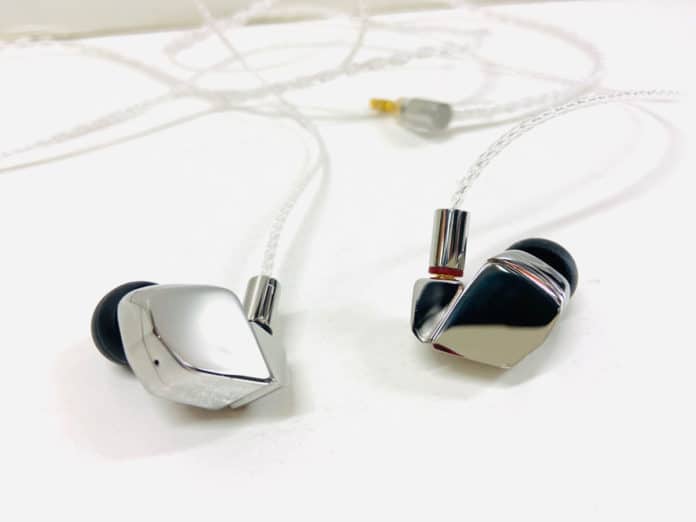If you’re familiar with Final Audio’s products, it may look like the E series and B series made whoopee and had a baby. (And the Piano Forte may have been the unicorn in the relationship). In fact, it’s a stainless steel baby with a dynamic driver and beryllium diaphragm. Yes, the famous Japanese brand, Final Audio, has released their new flagship IEM, the A8000. What can you expect in terms of sound and design? Let’s take a look in this Final Audio A8000 Review.
Final Audio A8000 Review
IN the BOX

FIT
The A8000 has a bit of weight to it, but the earbuds don’t feel heavy when they’re in the ears. The over-ear design creates a snug seal. And although the hard angles of the shells don’t appear particularly comfortable, I had no problems with the ergonomics. I felt no pressure against the contours of my ears, so, no worries here. But given the stainless steel shells, folks who live in say…Montreal, may want to warm up these steel earbuds before putting them in.
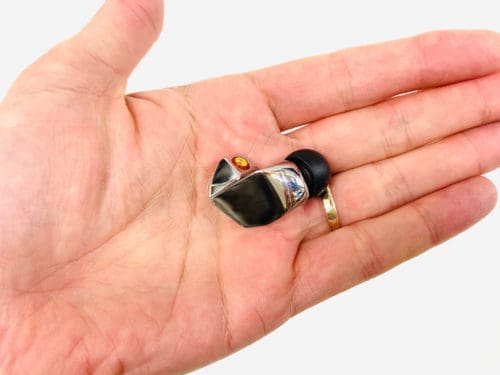
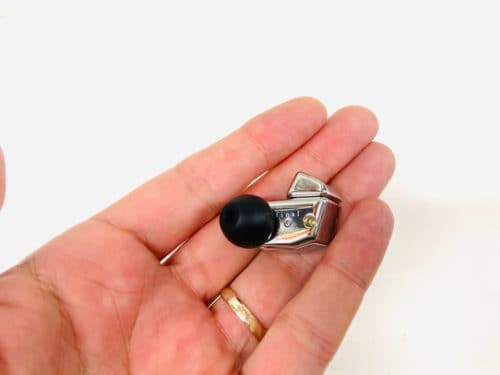
DESIGN
There’s a lot of information on Final’s website about the design of the A8000’s dynamic driver, which employs a beryllium diaphragm. And they’ve gone through many pains to minimize vibration, which can be difficult with certain types of stainless steel shells. In fact, they have divided the chassis into 4 separate chambers to reduce resonance.
Like a lot of Final’s IEMs, these buds take a tad extra driving power. (Impedance is 16 Ohms and sensitivity is 102dB). And though you will get enough volume from a mobile device, I’d recommend a player or DAC with a little oomph. For the purposes of this review, I used my good ol’ FiiO Q5s.
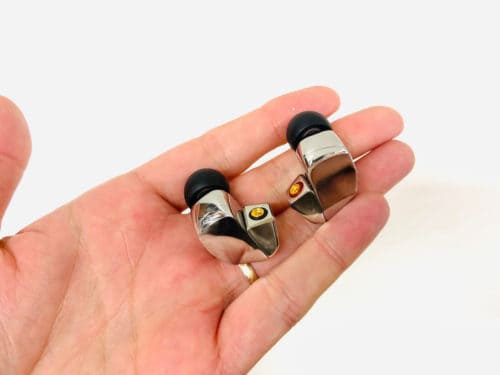
The OFC silver-coated cable has detachable MMCX connectors. The cable has a some decent thickness to it, while the connectors feel sturdy as well. They’re also not impossible to detach, thanks to the handy yellow pliers included in the box. And in general, I’m never worried about the longevity of Final’s stuff. Like all their other models, the build quality is undeniably solid.
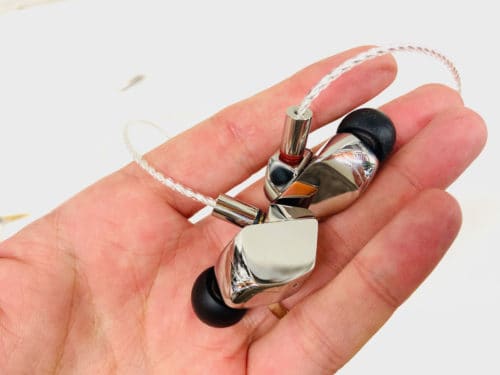
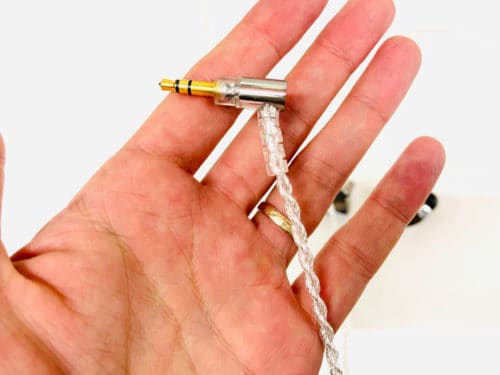
SOUND
Low Frequencies
The bass has plenty of depth, often producing somewhat of a visceral experience. At the same time, it only takes a moderate amount of stage room. And though the sub frequencies come through, it doesn’t feel at all “subby” like an Empire Ears model, for example. The bass also delivers a slightly dampened quality. So, Final’s attempt at minimizing resonance becomes evident, especially in this range. Playing some rock tracks, the A8000 presented a tasteful amount of low-end warmth. And listening to the bass on a few pop tracks, the impressive speed of these earbuds also becomes apparent.
Middle Frequencies
Though you will hear some low mids, the upper mids have much more presence in this range. So, vocals really shine through the mix, giving it a robust, dynamic feel. And you can just feel the power of the dynamic driver. It’s like speeding down the highway in a heavy race car. But what sets the IEMs apart is the almost brassy quality of the sound. It’s very “stainless steely”, especially once you reach the higher frequencies. And I mostly dig it. It gives snares and other percussion (and even guitars) in this range a snappy and sparkly edginess. It’s certainly distinctive and highly enjoyable, even if it’s less than forgiving on the ears during long listening sessions. The resolution is also impressive, though at the same time, there’s a fluidity to the sound that lends itself especially well to classical tracks.
High Frequencies
As mentioned above, the A8000’s most defining quality lies in the higher frequencies. And some audiophiles may feel it’s an acquired taste. There’s a slight metallic feel in the highs that, again, obviously has something to do with the housing. And at its best, it delivers a gorgeous glistening quality. Smooth and glowing vocals, for example. But at its worst, you may feel a little vocal sibilance or tinniness in percussion in the highest frequencies. I have trouble believing that this is an unconscious design flaw, as the housing is an intentional choice, just like it was with the Piano Forte IX. And whatever your feelings are about this characteristic, there’s no question that it makes for a unique IEM.
Soundstage
Though perhaps not as vastly spacious and multidimensional as something like a 64 Audio IEM in this price range, instrument placement is pretty spot on; the imaging feels rather conventional (that is, it’s not an psychedelic visual experience), but the A8000 delivers the kind of precision you would expect from an IEM at this price point.
PROS and CONS
Pros: Great resolution; fast; fluid; lustrous; dynamic vocals; distinctive.
Cons: Not very forgiving; “brassy” profile not for everyone.
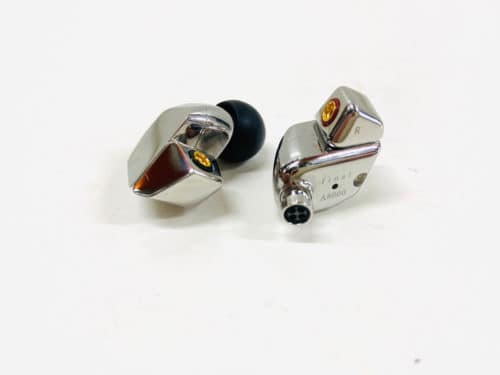
SUMMARY
The A8000 may not be the ideal choice for someone looking for their first IEM. There are more versatile or well-rounded (and more forgiving) options out there. However, amongst audiophiles who already own everything, the A8000 could turn out to be a huge seller because nothing else sounds like it. (Well, it may be less eccentric than the Piano Forte Series). So, it’s not just skilled, but also highly memorable. And in this saturated IEM market, that’s saying a lot.
You can find the Final Audio A8000 for the best price here:
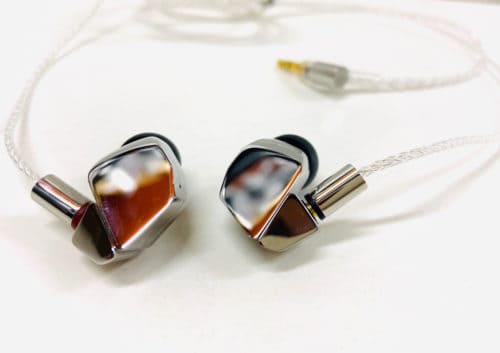
MajorHiFi may receive commission through retail offers.
Compare the ranking of various headphones, earbuds and in-ear monitors using our tools.
Discuss this, and much more, over on our forum.
---MAJORHIFI may receive commissions from retail offers.


